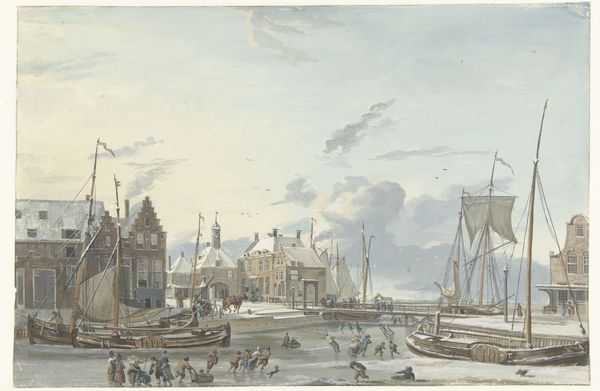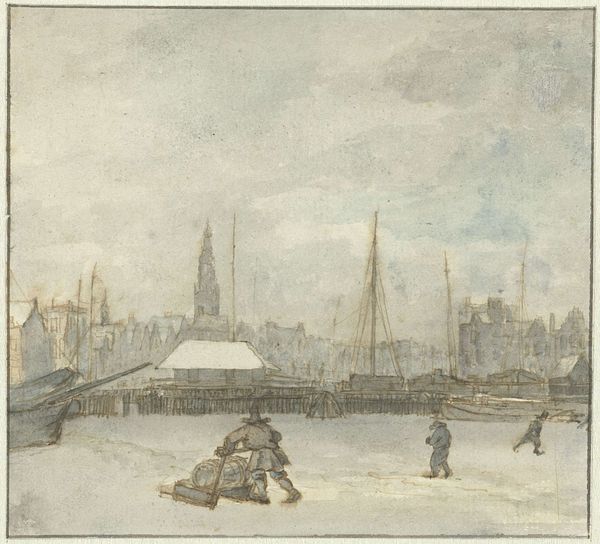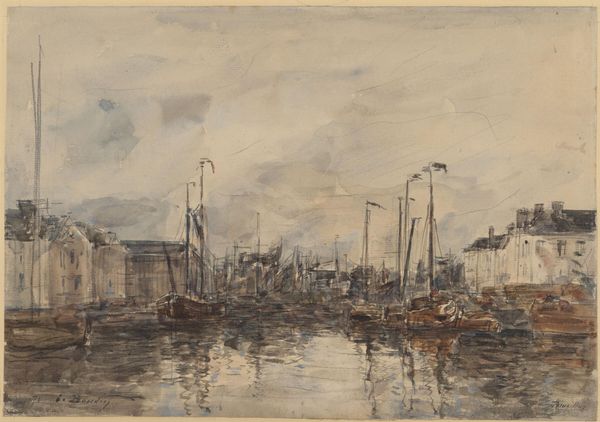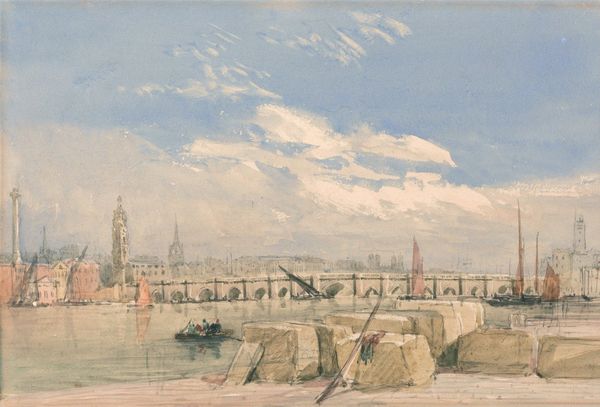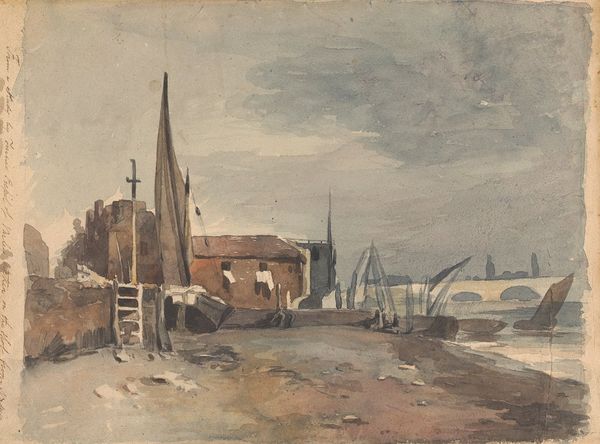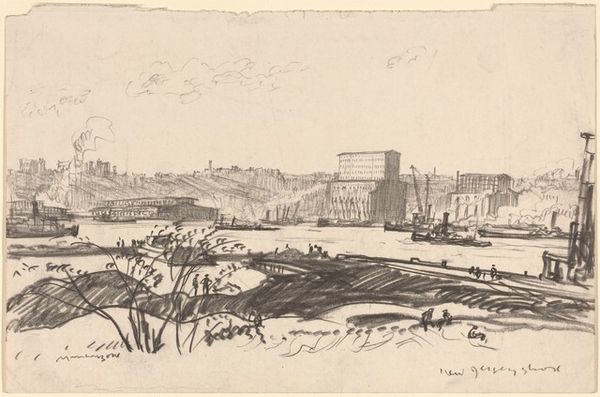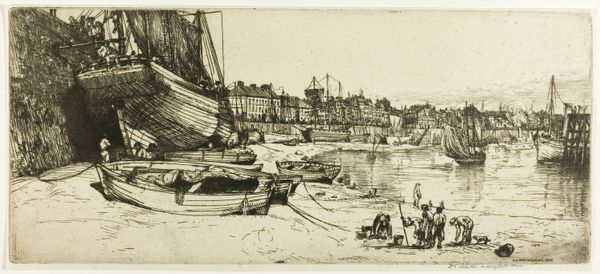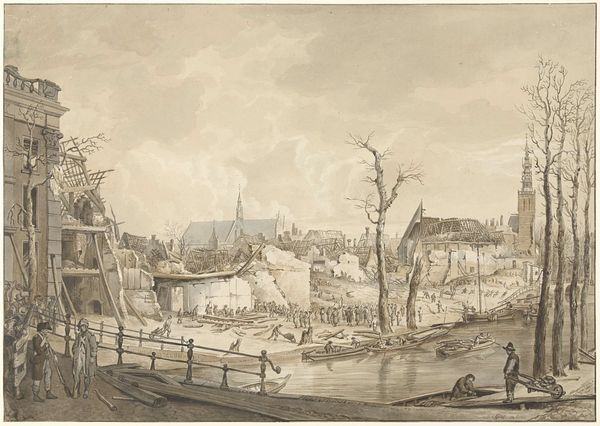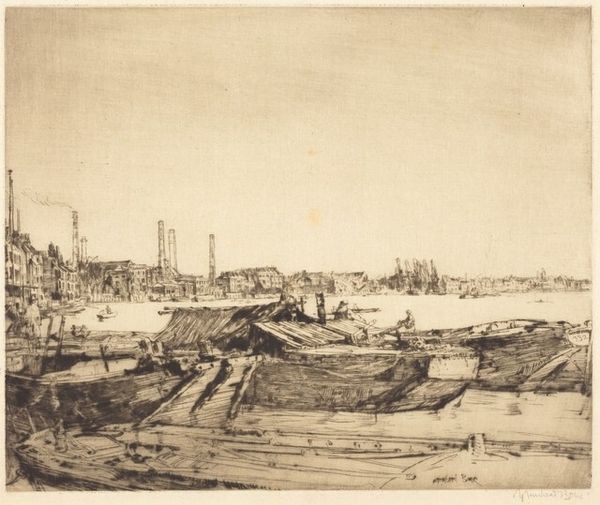
plein-air, watercolor
#
plein-air
#
landscape
#
oil painting
#
watercolor
#
underpainting
#
romanticism
#
cityscape
#
watercolor
Dimensions: height 316 mm, width 503 mm
Copyright: Rijks Museum: Open Domain
Editor: This is Thomas Shotter Boys' "View of the Seine at the Pont des Arts," created in 1831, using watercolor. There's such a delicate, almost hazy quality to it, a sense of bustling activity softened by the light. What do you see in this piece? Curator: I see a city portrait at a crossroads. Boys painted this during a time of immense social and political upheaval in France. The aftermath of the French Revolution was still shaping Parisian identity. The detailed depiction of commerce on the Seine speaks volumes. Do you see the working boats juxtaposed with the grand architecture? Editor: I do! The boats seem almost like temporary structures against the permanence of the city. Curator: Precisely. It's a visualization of the push and pull between the working class and the established power structures. And note the romanticized style; even as he documents city life, he veils it in a soft, almost dreamlike aesthetic. This choice speaks to the complicated relationship artists had with portraying societal realities. Was he celebrating the industriousness of Paris, or subtly critiquing the inequalities that landscape concealed? Editor: So the artistic choices, like the watercolor and soft lines, are not just aesthetic, but actually contribute to a conversation about class and power? Curator: Exactly! Think of Walter Benjamin's concept of the "flâneur," the observer of city life. Boys, through his art, invites us to become flâneurs, to observe and question the social fabric of 1830s Paris. What stories do you think these streets whisper? Editor: It definitely makes me reconsider how I see the relationship between artistic style and social commentary. Thank you! Curator: My pleasure. Art like this reminds us to constantly interrogate the narratives we're presented with, visually and otherwise.
Comments
No comments
Be the first to comment and join the conversation on the ultimate creative platform.
